The Very Large Array is a collection of 27 radio telescopes in Socorro, New Mexico. Even though it isn’t a typical tourist attraction, we visited it last month on our way home from the Grand Canyon and the Balloon Fiesta in Albuquerque. We frequently visit places that aren’t typical tourist spots.
The Very Large Array gets its name from both the size of each reflector dish and the fact that the layout of the 27 active (plus one spare) radio telescopes is adjustable over a distance of up to 24 miles between antennas. The pattern is laid out like a three-pointed star, with each leg, measured from the center, up to 13 miles long.
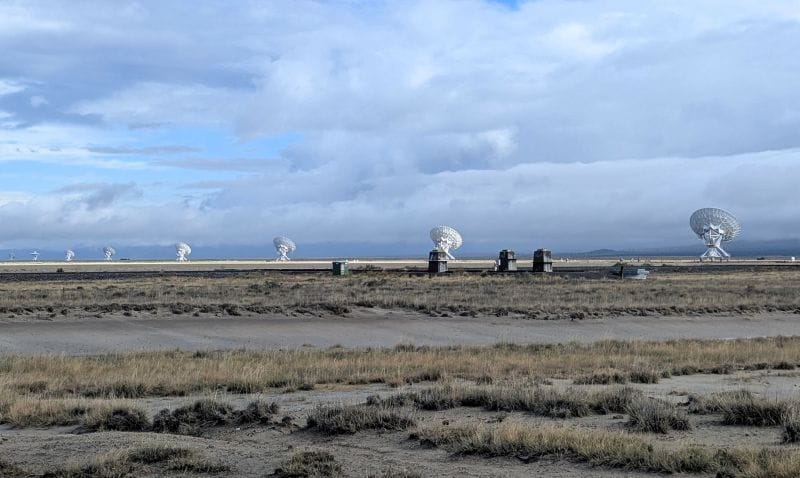
The Very Large Array isn’t always 24 miles across; instead, the antennas are moved every 3 to 4 months. Sometimes all the antennas are grouped within an area of only 600 meters. This tight grouping is called configuration “D”. When the array is at full size, it is called configuration “A”. The website below has the configuration information at the top of the page. If you happen to visit when the array is in configuration “D,” the photos will be great.
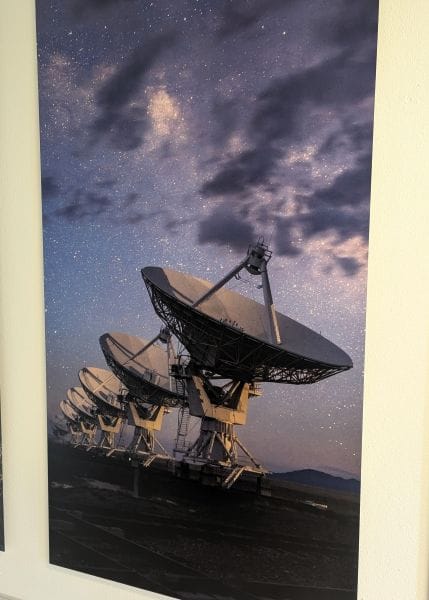
National Radio Astronomy Observatory
Socorro is a small, quiet college town seventy-five miles south of Albuquerque and is home to the New Mexico Institute of Mining and Technology. The Very Large Array is fifty miles to the west of Socorro on a dry lake bed surrounded by small mountains. The site was chosen because, compared to much of the country, it has little radio interference. Much of the data gathered by the Very Large Array is analysed at the offices of the National Radio Astronomy Observatory on the campus of New Mexico Institute of Mining and Technology.

Very Large Array Radio Telescope
A visual telescope is focused on visible light; the Very Large Array is concentrated in parts of the radio spectrum outside the visible range. All the stars and galaxies in the universe emit wave-form energy. The Very Large Array radio telescope focuses on this range of waveforms between 74 MHz and 50 GHz. To receive this energy, the antennas focus precisely on a single point in space, simultaneously and with very high accuracy.
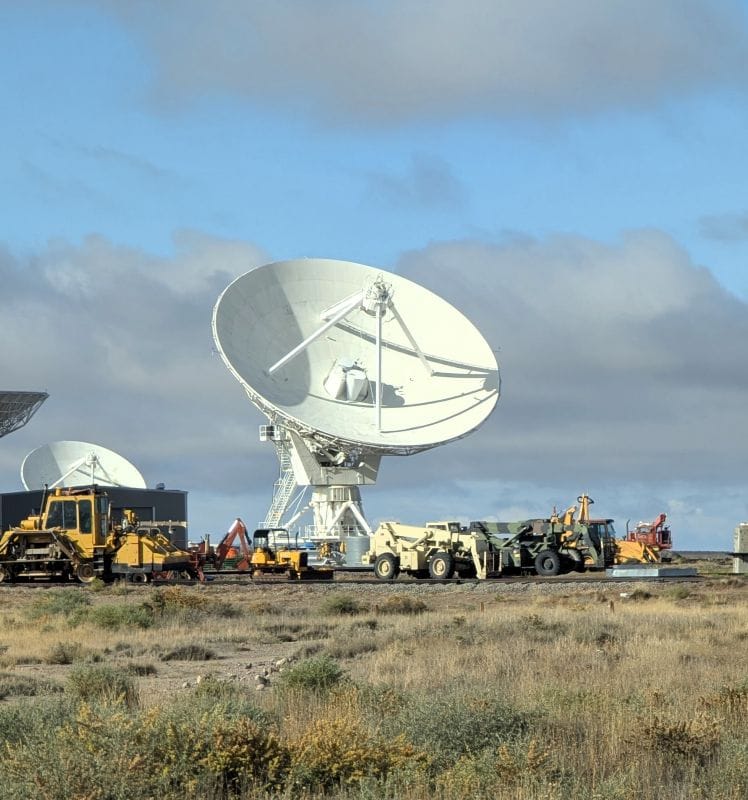
The adjustable location of each antenna enables receiving energy from slightly different places. The energy from each object is then fed into a supercomputer to strip out other electromagnetic noise and increase resolution. Changing the resolution allows scientists to study different aspects of the energy source.
An even bigger Very Large Array Radio Telescope
The current Very Large Array is about 40 years old, but in about 10 years, the Very Large Array in New Mexico will be upgraded with 160 new antennas, plus 100 other antennas, all connected to the supercomputer, which will then gather data from other identical antennas scattered across North America.
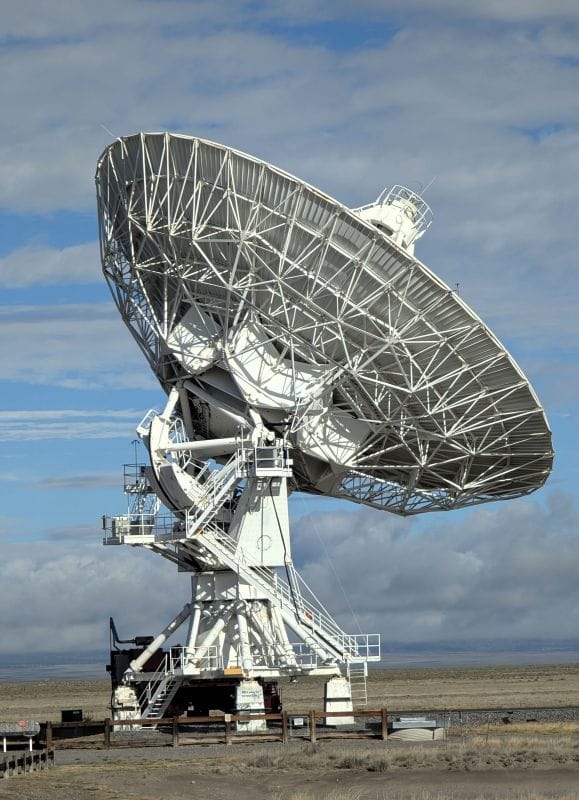
How to visit the Very Large Array
Like Hollywood, which frequently uses the Very Large Array as a backdrop in movies about space aliens, you can visit the Very Large Array by driving west of Socorro for about fifty miles. The Visitor Center is open daily except on Thanksgiving and Christmas. If you visit the Very Large Array, put your cell phones in airplane mode. First, because your cell phone sends signals, which are picked up by the antennas and need to be filtered out by the supercomputer. Your cell phone is unnecessary interference. Second, put your cell phones in airplane mode because there are zero cell phone towers, and they won’t work anyway.
Other places that are rarely visited.
We frequently visit places that others overlook. You will probably be unable to visit the Trinity site because access is so limited, but if you get the chance, you should go. Here is a link to our story about visiting the Trinity Site. Trinity Site
Please subscribe and join us on our journey.
We will add you to our email list and send you updates about new articles. Here is a link. Subscribe
About our links
As you are aware, our blog’s income is zero, which enables us to remain independent and tell the truth. We do not get income or commissions. No, we don’t make paid endorsements. We don’t make recommendations; instead, we will tell you what we like (or dislike). The links are only provided as a quick reference to help our readers.
Links
The Karl G. Jansky Very Large Array
About comments
We love seeing your comments, but please note that they are not automatically posted. I get about 20 spam comments every day, so I have to turn off automatic comments. I read and then personally publish every comment to protect the blog, keep it on topic, and maintain its authenticity. You will not see your comment right after you hit submit. Sorry for the delay in publishing your comments. Some comments come from personal emails and Facebook. Please know that we would love to hear from you.

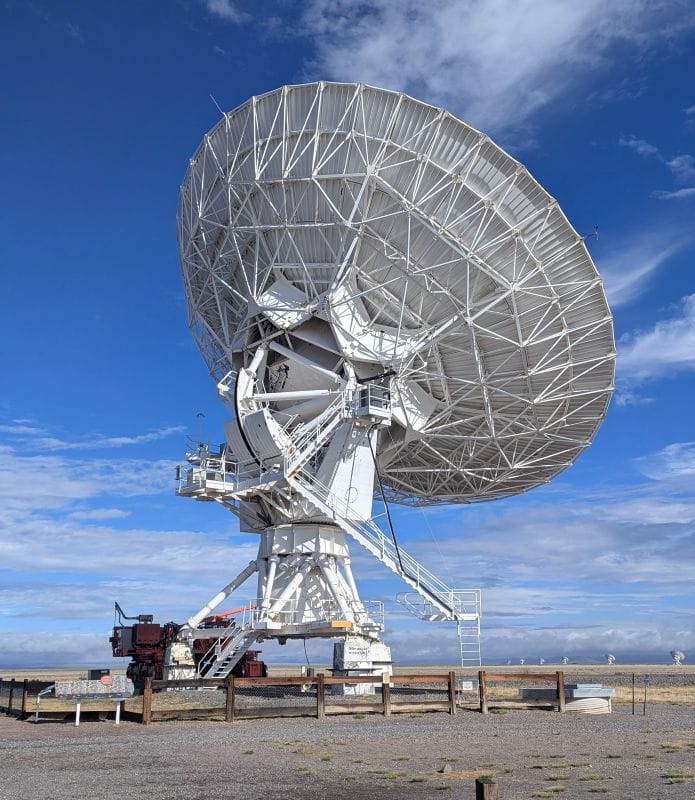
Your blog is the best, Scott… I am learning from you and Tami… on all your adventures!! Welove you both❤️
Thanks to both of you, and Happy Veterans Day, Scott. Thank you for your service. Mary Beth and I enjoy reading your blog, and it is a big plus for us as we plan our annual 99-day road trip. Meeting up with you at Whidbey Island was a blessing. Safe travels and God bless.
Thank you for all your messages. As an ‘armchair adventurer’ in the winter, I love hearing about your travels. I hope to be back on the road in my RV come Spring in Colorado. I’ll look to your past travels as inspiration for the next journey my grand dog and I take as a solo (widow) traveler.
God bless you two,
Pam
I had no idea that was even there.